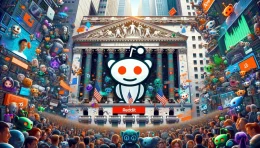
For some great weekend reading, check out
this Fortune magazine article that gets inside the great Google brain. Some extracts
that I enjoyed…
“What emerges from months of interviews with employees ranging from
fresh-out-of-college hires to the CEO is that Google firmly believes it has a
framework for figuring out the future. It should come as no surprise that the plan is
as irreverent, self-confident, and presumptuous as the company itself. Google’s
executives don’t articulate it this way, but the framework can be found in the title of
Shona Brown’s book: structured chaos. Indeed, along with Googleyness, chaos is among
the most important aspects of Google’s self-image. Understanding how Google thinks
about chaos — like Page’s teachable moment after Sandberg’s million-dollar mistake — is
critical to divining where the company goes next. “Are lots of questions hanging out
there in the market?” asks Sandberg. “Sure. Because we don’t always have an answer.
We’re willing to tolerate that ambiguity and chaos because that’s where the room is
for innovation.” Good strategy — if it actually works.”
(emphasis mine)
Later in the article it states that Google has released “at least 83 full-fledged and
test-stage products”, but as yet none have come close to the success of their search and
online advertising linchpins.
Google of course has a heck of a lot of smart employees –
and they are given the freedom to experiment and innovate. The Fortune article takes a
more systemic view of this than previous articles. The Google system is made up of
Googleyness and ‘structured chaos’.
Another part I liked was the description of Google CEO Eric Schmidt explaining the
history and future of computing:
“He draws a series of connected clouds representing the history of the computing
industry, from mainframes to minicomputers to PCs to today’s mobile devices. The gist of
the illustration is that there’s practically no money left to be made in computers, not
in hardware or software. The money, instead, is all in Web applications, a trend
Schmidt had been predicting since his days as chief technology officer at Sun a decade
ago. Users won’t always be traveling to the Web on the PC, which is why he scribbles
lines for cellphones, cable set-top boxes, Treos, BlackBerrys, and so on.”
(emphasis mine)
Again, everybody sees and talks about these trends – but it’s Google’s ability and
willingness to act on them which makes them such a compelling Internet company.
Microsoft, Yahoo and Amazon are that too – but none of them have that ineffable
Googleyness 🙂









